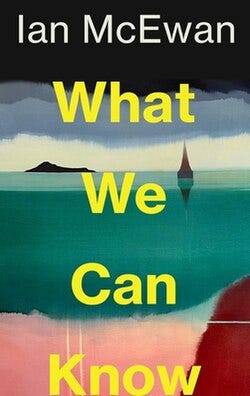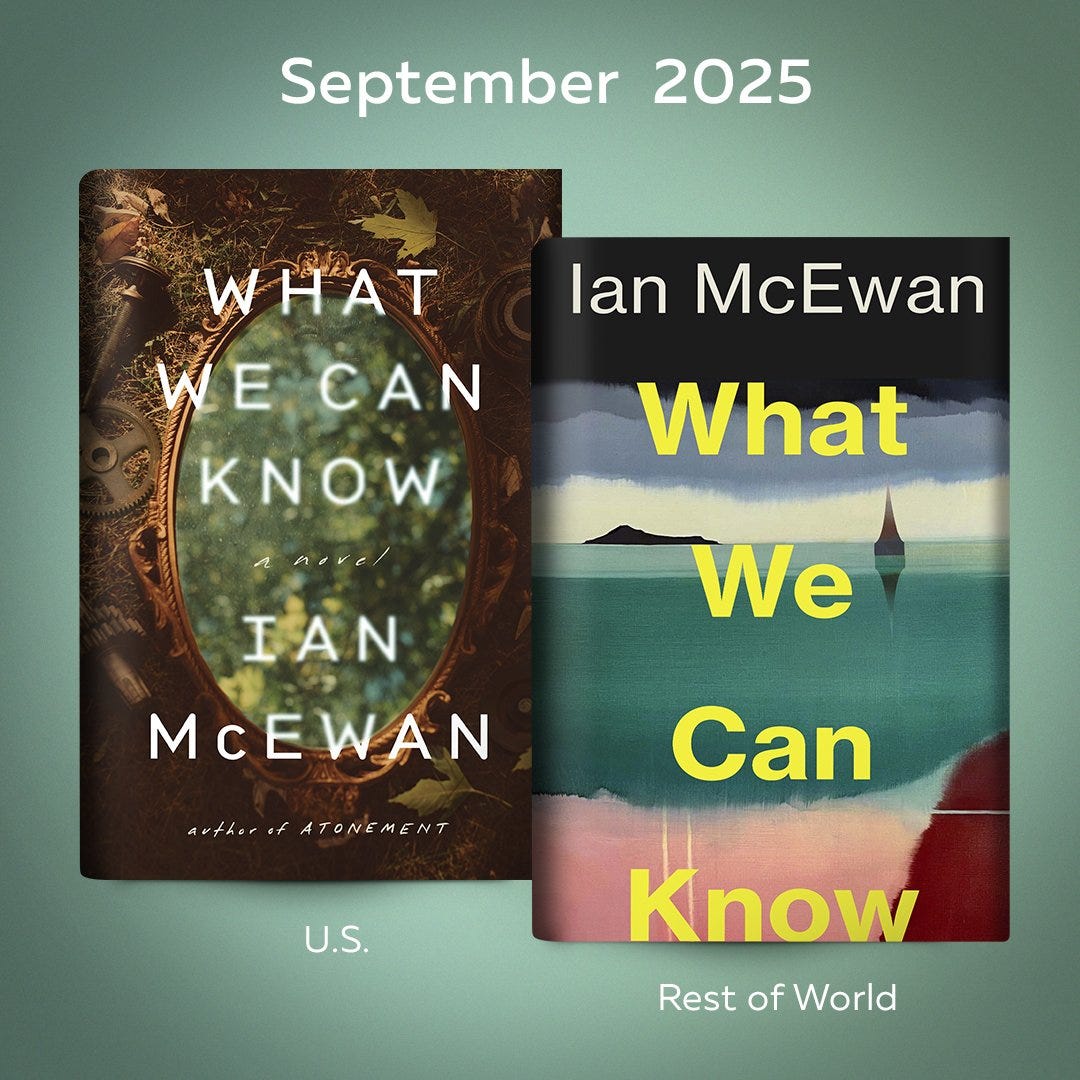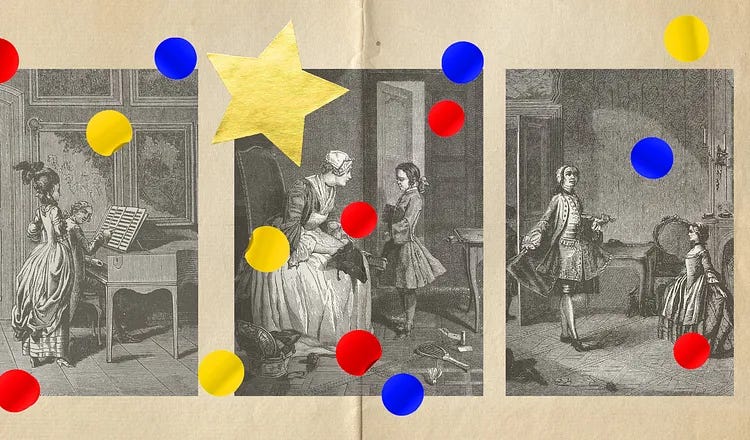Welcome to Friday Footnotes, a weekly newsletter from me,
(founder of Storygram). It’s even got pictures 🙌Each week I touch on reading, motivation, children’s books, education, writers, and whatever else catches my attention. Please reply with your thoughts, and share at will!
This week’s footnotes 🧐
Here are three questions that occurred to me this week that ended up as footnotes in my journal. Leave a comment with your take!
1. Should books have age grades?

This isn’t a call for censoring. But isn’t it a bit odd that we don’t really know what to expect when we open any given book?
On numerous occasions, I’ve encountered a section of graphic violence or sex in a book that seems to have come from nowhere. I struggle with this. Readers place trust in authors, and sometimes that trust is abused. And while I have heard that you can ‘skip those bits’, I find that to be easier said than done.
Perhaps this is the publishers not wishing to put off purchasers?
Or maybe most readers would rather not have the plot spoilt by meddlesome classifications organisations.
But as someone interested in how to choose good books for children, isn’t some kind of classification useful? Even just to help parents to make choices than to prevent children from reading content way above their age grade.
2. What makes a great book cover?
In part, this is a sneaky way to make a big announcement:
Storygram is going to publish its first original children’s book!
I can’t say much at this stage, except that I am considering book cover design a lot as we begin work on the illustrations for our new book. It’s all very exciting and new, so watch this space!
Anyway, this week I noticed Ian McEwan’s new book advertised on the tube:
I like the artwork, and the elusive hints make me want to know more.
There’s something, a church spire perhaps, emerging from the water. Is it a flood? Or climate change? And there’s something lurking beneath the water…
The combination of subtle artwork combined with the completely in-your-face yellow title is quite the partnership. The utilitarian text works because it is offset with the natural artwork.
The author’s name is big: he has selling power. Some will buy his books without knowing anything about them — a point I made in a recent post about motivating children to read via authors they know and love:
There are millions of books available. But I would choose to read Terry Pratchett’s books because I trusted the author - I knew I would enjoy it. I was excited to read more about characters I loved. Just as children flocked to buy Harry Potter books the day they came out. Or people lined up in their millions to watch another instalment of spandex-toting superheroes in the cinema.
There’s also the simple truth that you can’t un-read something. When you look at words, the text enters your mind automatically, sometimes before you even realise you’ve read it.
I’ve discovered there are two versions of this book cover design for different markets:
Both use similar approaches: subtle, artistic imagery combined with large text. The mirror (or is it a reflection of trees in water?), the fallen, golden leaves perhaps referencing ‘fall’ juxtaposed with the green leaves in the reflection - might they reference ‘Eden’, or the past? Old pieces of machinery - perhaps this is about the end of the machine age? A return to nature?
Which design do you prefer? And why do you think the Americans got a different one?
3. How do parents do it?
It seems to me that parents are faced with an extremely daunting prospect when trying to get their kids reading today. I am amazed by how much parents have to cope with, and raising little readers seems like a pipe-dream in the screen age.
One of our upcoming mini-projects (another announcement!) is a podcast series where I’ll be discussing with parents the challenges of getting kids reading.
If you’re interested in being involved, send me a message! Also, I’m workshopping names for the podcast, so if you have an idea, please let me know.
Worth a read 💯
This is the second time I’ve referenced an article by
in Friday Footnotes. Seems I’m quite the fan!This one is titled I Taught My 3-Year-Old to Read ‘The Hobbit’.
Erik argues that we can teach children to read much earlier than is commonly accepted, and now he’s put his money where his mouth is, with his own son. He’s even recorded a video of his three-year-old reading the following passage from the Hobbit:
In a hole, in the ground, there lived a hobbit. Not a nasty, dirty, wet hole, filled with the ends of worms and an oozy smell, nor yet a dry bare, sandy, hole, with nothing in it to sit down on or to eat: it was a hobbit-hole, and that means comfort.
The trick to getting them started so young, he says, is “to pretend like you’re in the 1700s”. By which he means a return to one-to-one tutoring, or aristocratic tutoring - a style of education that is now almost completely unfashionable but was successful for millennia.
I’m fascinated by his suggestion that AI offers the potential to provide aristocratic-style tutoring at scale:
Entire schools are springing up with the promise to do exactly that. Or at least, to try to distill the techniques that make this sort of learning so effective. Right now is the most exciting time in child education since Maria Montessori started her first school over 100 years ago.
One example is Alpha School in Austin, Texas, which advertises that it uses AI to do the tutoring. By confining academics to just two hours a day, teachers are replaced by “guides” who demonstrate life skills and lead projects the rest of the time. Many of the school’s impressive results (which include claims by the founders of doubling the speed of learning) stem from trying to replicate the effects of tutoring via AI and adaptive curricula in those two-hour sessions.
That seems an optimistic take on schooling compared to what I’m generally reading online, and I don’t feel thrilled about removing humans from the chain, even with the impressive results touted here. But plenty of illuminating reading here from Erik.
Read the full article here.
Quote
That’s all for today. Have a wonderful (wet) weekend. 😊





